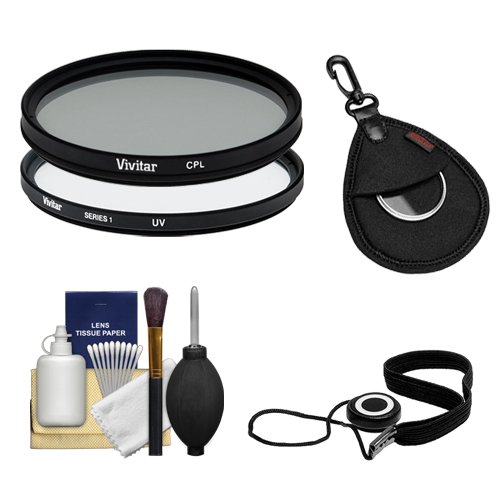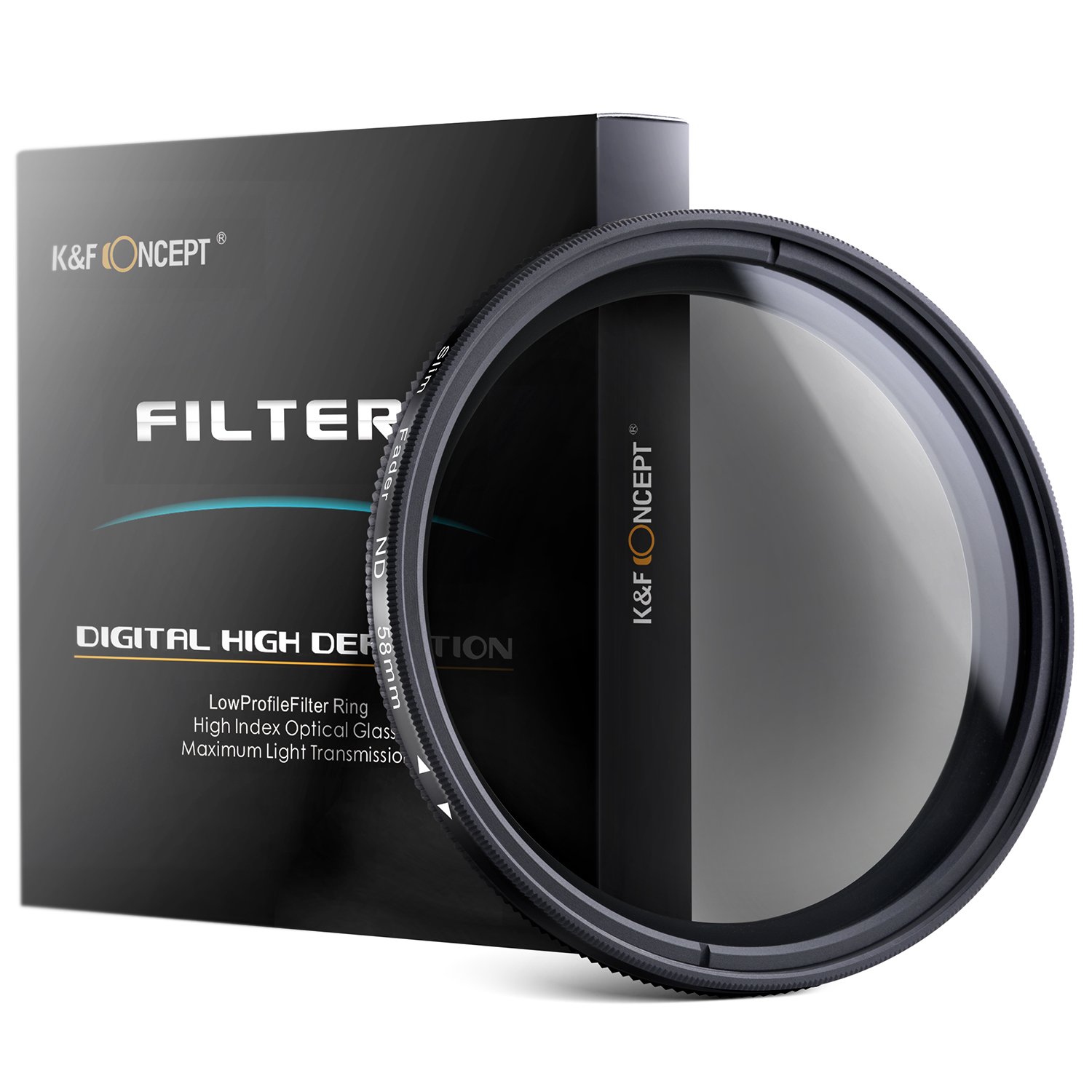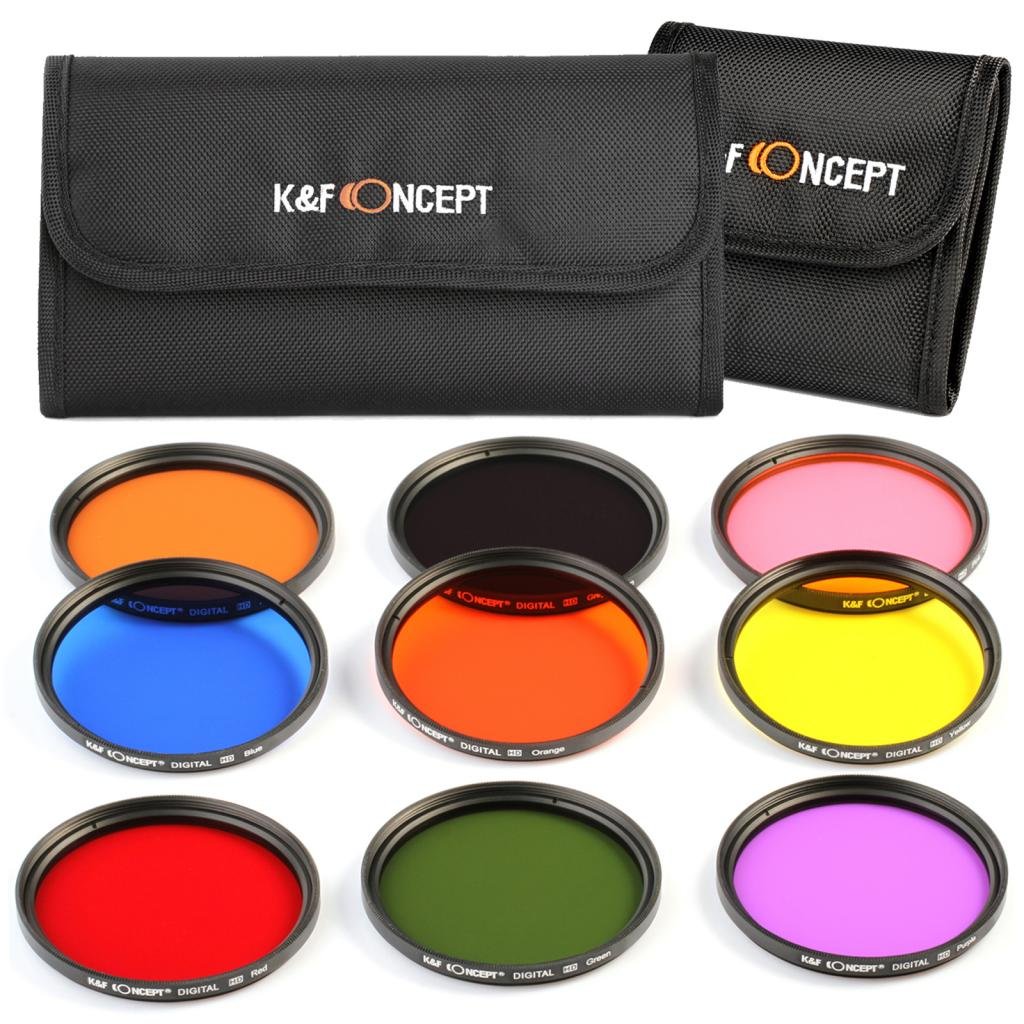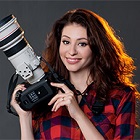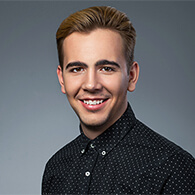Best Lens for Portraits

12 Best Lenses for Portraits
.jpg)
Even an entry-level DSLR can take great pictures for fashion magazines with a high-quality lens. The situation is vice versa with a bad-quality lens. So, it’s necessary to invest in a good model instead of spending money on the expensive camera.
What focal length do you need? Generally, 35mm and 50mm lenses are used for portrait photography. Think about the places where you plan to shoot, how much space you will have and, finally, the distance from you to a model. Keep in mind that the lenses from 35mm to 200mm are usually used for taking event portraits at weddings, etc. Lenses with a focal length of 24-105mm are universal.
1. Nikon AF-S 105mm f/1.4E ED
.jpg)
Nikon AF-S 105mm f/1.4 ED appeared quite recently but has already won the title of the best lens for portraits. It was created to embody all the ideas in the field of art photography. The lens didn't let me down in the studio or at the open location. Regardless of the lighting, the device provides graceful bokeh and tracing of the smallest details even at the maximum open aperture.
The first thing I noticed was the fast autofocus. This is very helpful when shooting large- scale portraits or beauty photo sessions. The only drawback of this lens is, perhaps, the absence of a stabilization system. Bokeh produced by this portrait lens is impressive. The picture is contrasting and airy at the same time.
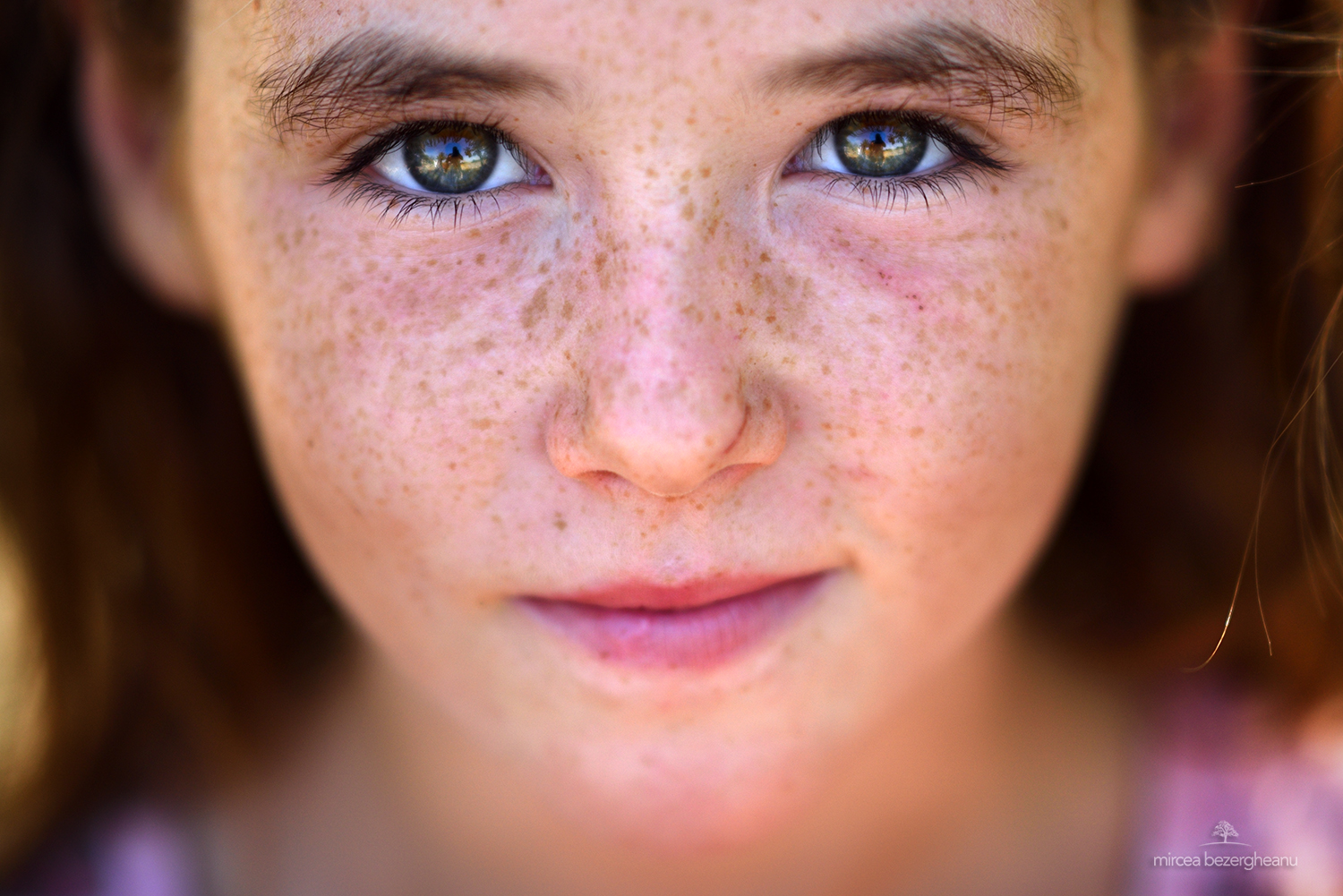 Photo by Nikon AF-S 105mm f/1.4E ED
Photo by Nikon AF-S 105mm f/1.4E ED 2. Canon EF 50mm f/1.8 STM
.jpg)
Canon EF 50mm f/1.8 STM begins the list of my best lenses for portraits. It can be called a perfect option for the amateur shooter. This lens is really light and compact. It works equally well with both crop and full frame cameras. I did not expect such sharpness when shooting with a budget model. I liked that all possible distortions were minimized: chromatic and spherical aberration, as well as glares. Yes, they are present but do not prevent users from getting an astonishing result.
As for a focus ring, it is very convenient, though it’s electronic. A disputable spec of this good portrait lens is its bokeh. Frankly speaking, it is quite harsh with contrasting highlights. Some shooters may not like it, but I use it as an artistic effect. There are no worthy competitors with the best optical quality and equally wide creative possibilities in this price category. Therefore, I advise it to owners of Canon reflex cameras for use in portrait photography.
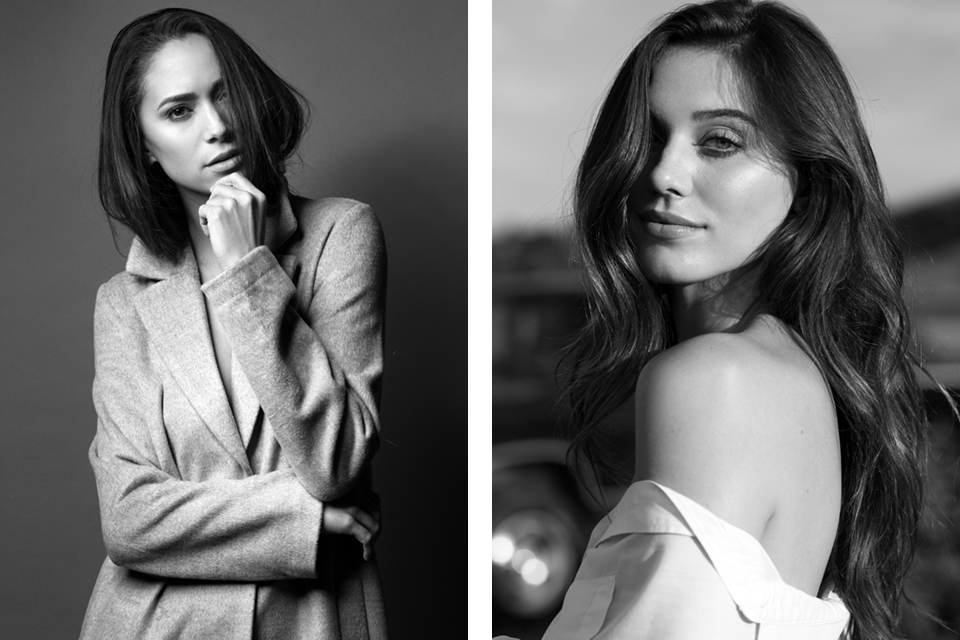 Photo by Canon EF 50mm f/1.8 STM
Photo by Canon EF 50mm f/1.8 STM
- If you want to update your camera, read more about the best Canon cameras for portraits that are very much in demand and recommended today.
3. Canon EF 24-70mm f/2.8L II USM
.jpg)
I take portraits quite often, in different surroundings and lighting. So, this is the best portrait lens which I always take, especially for shooting weddings. When a person is at the location and you are not capturing him/her at close distance, a lens with a focal length of 70-85 mm is good to use for shooting a half-length and shoulder portrait. As you can see, this Canon wedding lens meets both requirements and is very multifunctional in general.
It is suitable for shooting portraits in nature and gives a decent zoom range. This lens is sharp with f/2.8 in the entire zoom range and has a very low level of distortion. Vignetting is noticeable only at an open aperture and glare protection is at a high level. I think that it is the perfect tool for reportage, event, and, of course, wedding photography. This is the best Canon lens for portraits that successfully allows taking group shots, close-ups, and portraits up to the waist with full-matrix cameras.
 Photo by Canon EF 24 -70mm f/2.8L II USM
Photo by Canon EF 24 -70mm f/2.8L II USM
- View more about what is the best lens for wedding photography you can buy to photograph bride and groom, their guests, and everything around in good and low light.
4. Canon EF 85mm f/1.2L II USM
.jpg)
Frankly speaking, I think that using such a lens with a crop camera will be inconvenient. Actually, what's the point? This portrait lens was designed specifically for full-frame cameras. Only they can truly unleash its full potential. I like that the picture is incredibly airy. Moreover, it will not be a challenge to bring the background into the defocus. I’m sure you’ll agree that such advantage of a lens for portraits is especially important while shooting in the city when there can be anything behind a model’s back.
The aperture values from f/1.2 to f/1.8 seemed to be optimal for a soft portrait. In this case, the micro contrast is slightly weakened, which makes it possible to hide minor skin defects. Probably one of the few drawbacks of this lens is its focusing speed. In total, Canon EF 85mm f/1.2L USM takes about a second to go through all focusing distances.
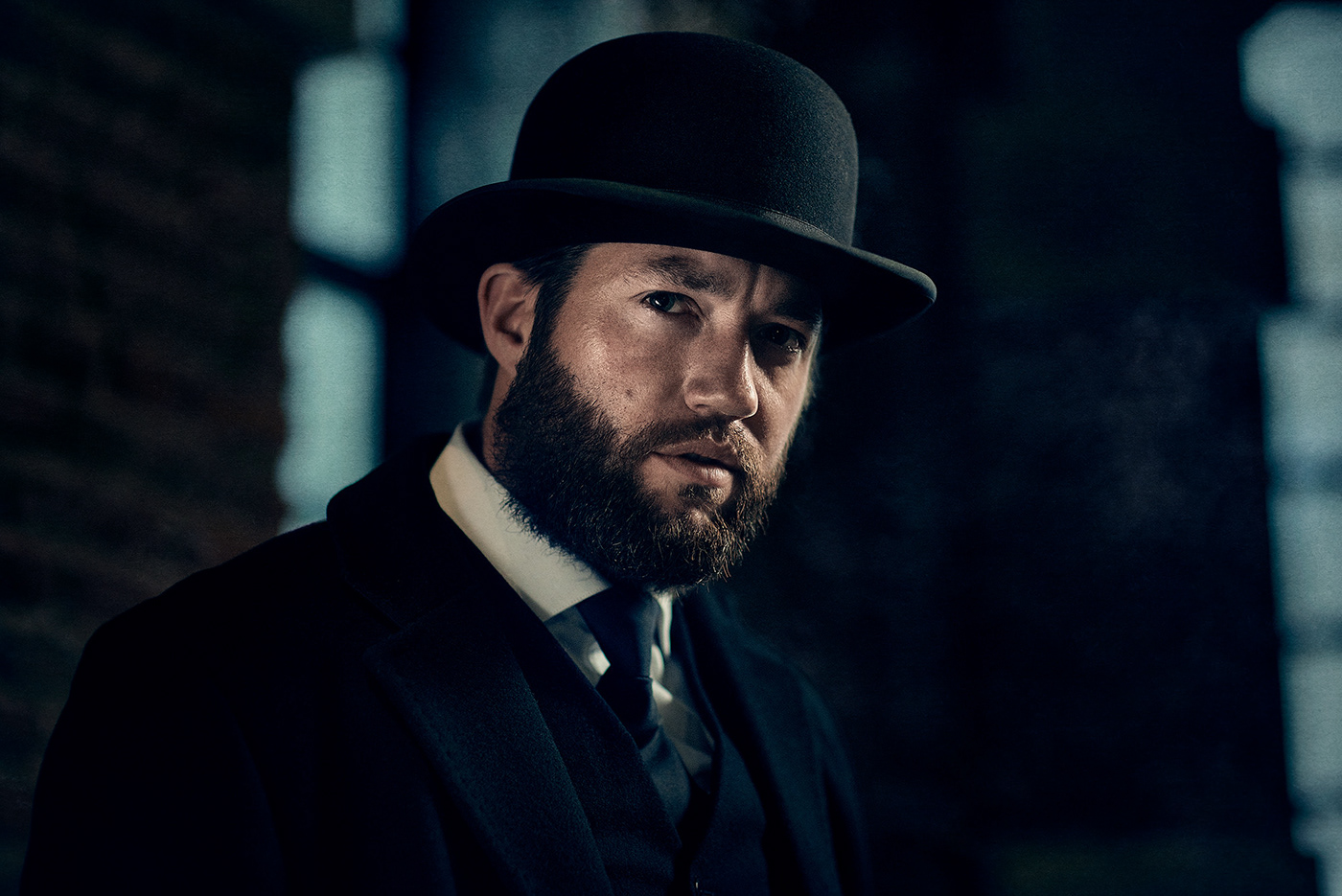 Photo by Canon EF 85mm f/1.2L II USM
Photo by Canon EF 85mm f/1.2L II USM
- If you are going to try yourself in other photography genres, read more about the best lenses for product photography or what are the best lenses for newborn photography are that you can have.
5. Canon EF 35mm f/2 IS USM
.jpg)
Personally, I often use a 35mm lens for wedding and street portraits. Is a 35mm lens good for portraits? Of course! It is chosen mainly for shooting people in a situation where you need to show the atmosphere and perspective. Moreover, I use this Canon lens for group portraits during wedding ceremonies or other significant celebrations. In addition, the following model is positioned as a lens for low light. I like that the focus is integrated, and this gives additional reliability and convenient use of filters.
The background is equally blurred. The focus of this Canon portrait lens is fast and accurate. There are very few misses even with insufficient lighting. The stabilizer helps get clearer shots if there is a lack of lighting. It is a quite good portrait lens, but not the best choice. Distortions appear and you have to come very close to the model to take a close-up portrait.
 Photo by Canon EF 35mm f/2 IS USM
Photo by Canon EF 35mm f/2 IS USM
- If you’re going to take photos of interiors or architecture, I recommend you use the following lenses for real estate photography that will suit any budget and purpose.
6. Sigma 85mm f/1.4 DG HSM
.jpg)
I have been waiting for the Sigma 85mm f/1.4 DG HSM release for a long time and now I am absolutely delighted. This Sigma portrait lens is larger and heavier than its alternatives, although it does not look so. I like that the focus ring works nicely, neither tightly nor loosely. Users can feel a slight push on the limits of the adjustment range, after which it freely scrolls further.
Focusing is internal. The ultrasonic motor focusing of this lens for portraits is smart. I tried to measure the focusing speed with a stopwatch from 2.8 feet to infinity but I didn’t succeed. It seemed to me somewhere in 0.3 or 0.4 seconds, but maybe less. The motor is very quiet. There is nothing sharper in my photo backpack. But be prepared that skin defects will be clearly visible with such sharpness.
 Photo by Sigma 85mm f/1.4 DG HSM
Photo by Sigma 85mm f/1.4 DG HSM 7. Tamron SP 45mm f/1.8 Di VC USD
.jpg)
Tamron is definitely the best lens for family portraits. It is made in a minimalist, but very functional style. I like that the lens has protection against dust and moisture. The manufacturer stated that the optical resolution of the lens is enough to use with 50-megapixel matrices. A slight vignetting is visible at open apertures, which disappears at f/5.6.
This lens focuses quickly enough with sufficient light, at daytime in the street. But you will have to devote some time to this process in poor light. By the way, this good portrait lens has an image stabilizer. Thanks to it, I could take sharp photos in bad lighting conditions, though I didn’t use a tripodtripod.
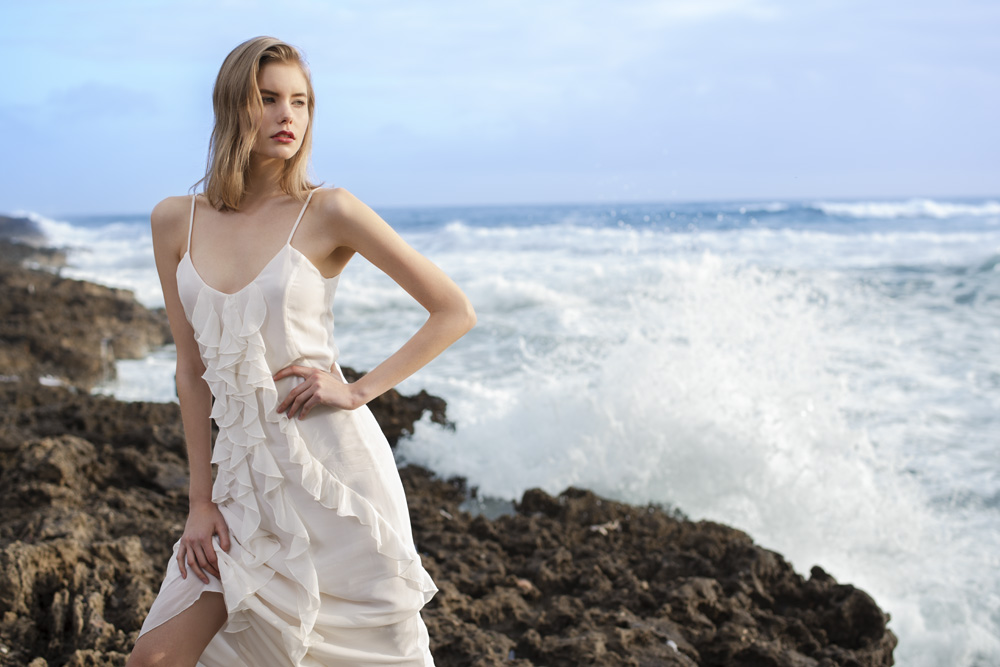 Photo by Tamron SP 45mm f/1.8 Di
Photo by Tamron SP 45mm f/1.8 Di 8. Nikon AF-S 50mm f/1.8G
.jpg)
The sharpness and contrast of this Nikon portrait lens have impressed me. The waterproof metal bayonet is great as well. Unfortunately, the cylindrical distortion is too visible, and the speed of autofocus is low. A pleasant feature is the relative simplicity of the optical design, so a shooter receives excellent picture quality at a low cost. Is 50mm a good portrait lens? No doubt! A model with a focal length of 50 mm is perfect for shooting semi-growth and half-length portraits.
The sharpness in the center of the frame is acceptable at an open aperture. However, it falls sharply closer to the edges of the image. Luckily, the situation is greatly improved when you change the aperture a little. The sharpness in the center increases to a higher level, and the corners also become more detailed. Due to the high luminosity, this Nikon portrait lens can provide beautiful bokeh. I like how it blurs the background. It is really nice and soft.
 Photo by Nikon AF-S 50mm f/1.8G
Photo by Nikon AF-S 50mm f/1.8G
- View more about recommended Nikon lenses for weddings that you can use with a good Nikon photography camera to take beautiful event photographs in any light.
9. Nikon AF-S 85mm f/1.8G
.jpg)
The focal length of this Nikon portrait lens is 85mm, which isn’t universal. There are not so many scenes that are convenient to shoot with such an angle. But it doesn’t mean that this focal length is worse or better than 50mm, just that each one has its own characteristics. What is the difference between 50mm and 85mm lens? The difference is in the provided distortions. The shorter the focal length, the more noticeable they are. The longer the focus, the more the picture corresponds to reality.
When shooting with a short-focus lens, you will be standing closer to the object than with a long-focus lens. In turn, this reduces the depth of field, which means the following: shots taken with an 85mm lens will have a more blurred background than those taken with 50mm. Therefore, such focal length makes this model the best portrait lens for Nikon. When shooting, it is possible to soften the texture of the model's skin. Bokeh comes out very smooth and soft. Blurred objects and glare in the background do not distract attention, which lets you highlight the main object in the pictures.
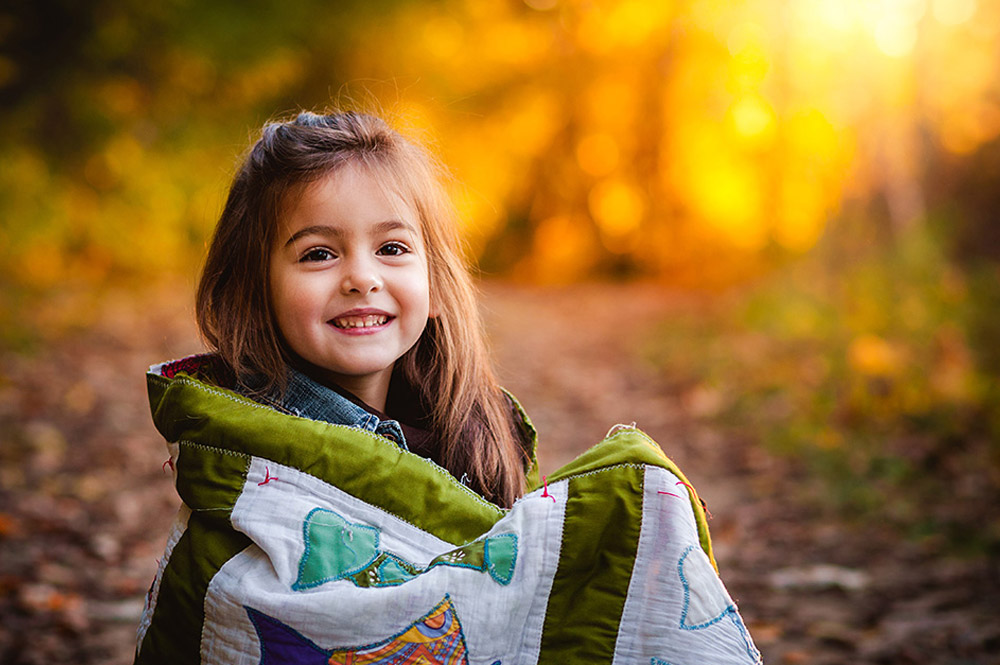 Photo by Nikon AF-S 85mm f/1.8G
Photo by Nikon AF-S 85mm f/1.8G 10. Tamron SP 85mm f/1.8 Di VC USD
.jpg)
The first thing I like about this Tamron portrait lens is a swift and silent autofocus thanks to the ultrasonic drive. The lens focuses very quickly without delays. When shooting portraits, the advantage of the stabilizer is the compensation of shaking in the viewfinder at the time of frame composition and focusing. This has a positive effect on the precision of autofocus, especially when you focus on a single point. In low light, the lens shows a fairly good result while the detailization of the picture remains at a high level.
As for bokeh, the background turns into smooth spots with slightly blurred edges, without "onion rings." I think the background should be just like that and doesn’t distract from the model. This particular feature made it the best lens for family portraits. The lens pattern isn’t characterized by strong micro-contrast at the open aperture, but the detailization is very high and even.
 Photo by Tamron SP 85mm f/1.8 Di VC
Photo by Tamron SP 85mm f/1.8 Di VC 11. Sony FE 85mm f/1.8
.jpg)
First of all, I would like to note that this lens for portraits doesn’t boast of an optical stabilizer. But let's be honest, it isn’t always necessary for a portrait photographer. Still, the minimum length of shutter speed is determined by the possible movements of the model in the frame, rather than by camera shake in the hands.
Aside from being the best lens for portraits, it is absolutely suitable for event reportage, it copes with dynamic shooting, and works excellently in continuous focus mode. I like how this lens beautifully blurs the background and makes it very smooth. Glare and flare may be captured only if the sun hits strictly at the angle of the frame.
 Photo by Sony FE 85mm f/1.8
Photo by Sony FE 85mm f/1.8 12. Sony FE 50mm f/1.8
.jpg)
This portrait lens didn’t make a vivid first impression. This is a classic 50mm model made of plastic. Even the focusing ring is plastic. Only a lens mount and a small pad on the front are made of metal. But the lens turned out to be very lightweight. You may hear a slight buzzing of the motor, but it does not cause any inconvenience.
I want to warn you that if there is even a small movement in the frame, it is better to turn on continuous autofocus. The minimum focusing distance is 45 cm, which is practically the standard for 50mm. How far can a 50mm lens shoot? Personally, my best variant of the distance of the object will be 7-9 feet. The sharpness of the shot and the bokeh are the strengths of this typical representative of up-to-date optics: sharp, contrast, almost devoid of aberrations.
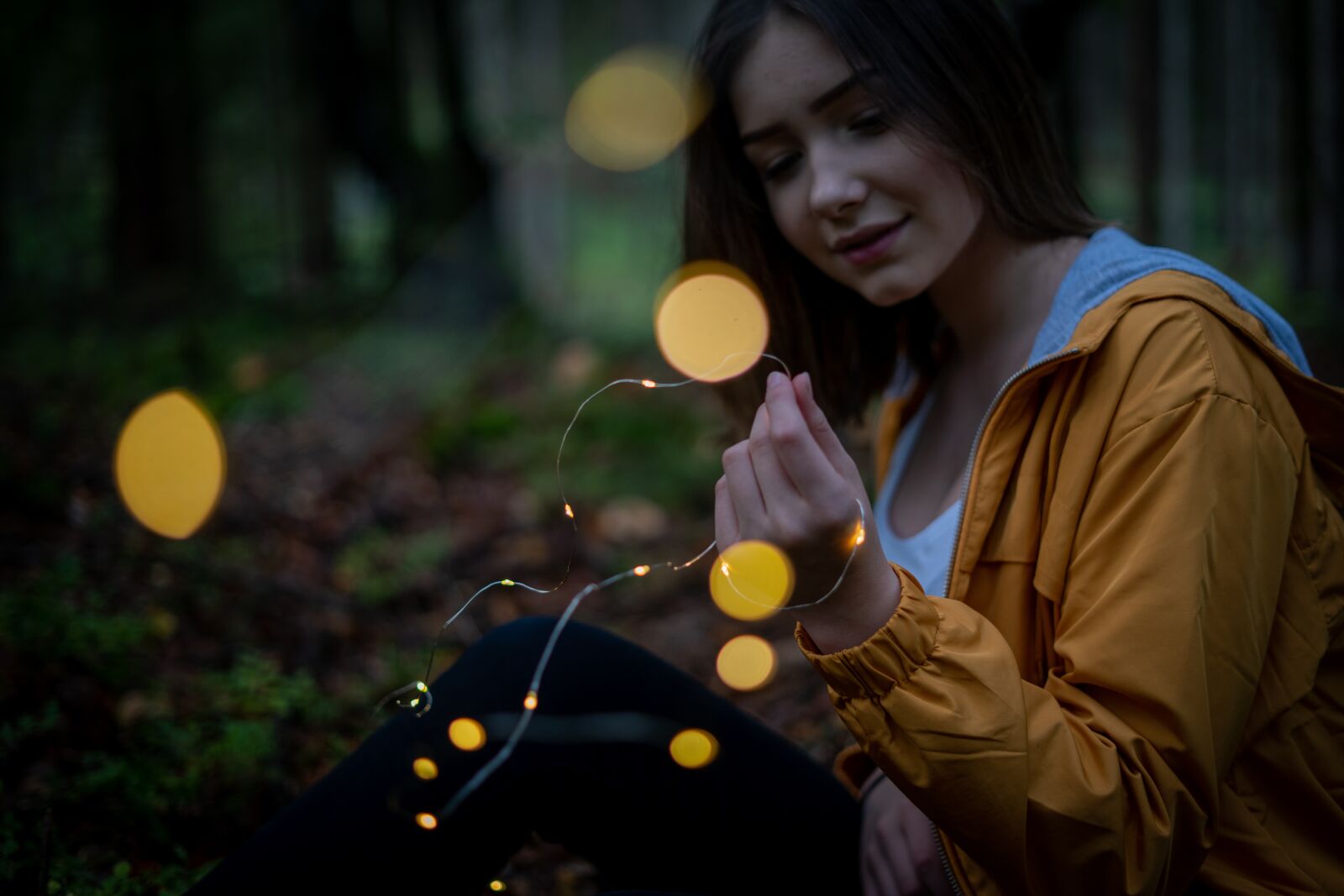 Photo by Sony FE 50mm f/1.8
Photo by Sony FE 50mm f/1.8 12 Best Lenses for Portraits
| Image | LENS | CHARACTERISTICS | |
|---|---|---|---|
 |
Nikon AF-S 105mm f/1.4E ED
OUR CHOICE |
Check PRICE → | |
.png) |
Canon EF 50mm f/1.8 STM
FOR BEGINNERS |
Check PRICE → | |
 |
Canon EF 24-70mm f/2.8L II USM
PROFESSIONAL |
Check PRICE → | |
.png) |
Canon EF 85mm f/1.2L II USM | Check PRICE → | |
 |
Canon EF 35mm f/2 IS USM
GROUP PORTRAITS |
Check PRICE → | |
.png) |
Sigma 85mm f/1.4 DG HSM | For Canon | Check PRICE → | |
 |
Tamron SP 45mm f/1.8 Di VC USD for Canon
FAMILY PORTRAITS |
Check PRICE → | |
.png) |
Nikon AF-S 50mm f/1.8G | Check PRICE → | |
.png) |
Nikon AF-S 85mm f/1.8G | Check PRICE → | |
 |
Tamron SP 85mm f/1.8 Di VC USD for Nikon | Check PRICE → | |
.png) |
Sony FE 85mm f/1.8 | Check PRICE → | |
.png) |
Sony FE 50mm F1.8 | Check PRICE → |
How to Choose the Best Lens for Portraits
A portrait lens, like other types of lenses, has its own peculiarities that must be taken into account while making a choice. If one lens captures small details of the skin and produces sharp bokeh, the other won’t be able to do it but will be good at something else. Here are the main characteristics that you need to pay attention to when selecting the best lens for portrait photography.
1. Focal Length
With large focal length, using a fixed focal length lens or a zoom lens in the teleposition, you may also take vivid expressive portraits. The large focal length of a good portrait lens allows you to keep a more comfortable working distance for both you and your model while getting a fairly close-up shot.
2. Available Shooting Space

If you shoot outside, there are more options, depending on your preferences. Photographing inside, you will have to take a wide-angle lens. Zoom 70-200mm lens or prime 85mm one is appropriate for open spaces. The focal length is less suitable for indoor shooting.
3. Bokeh

The larger the aperture (and the smaller the number of f-steps) is, the larger the bokeh. If you want to photograph with beautiful, blurred bokeh, you may take a look at special portrait lenses.
4. Matrix Size
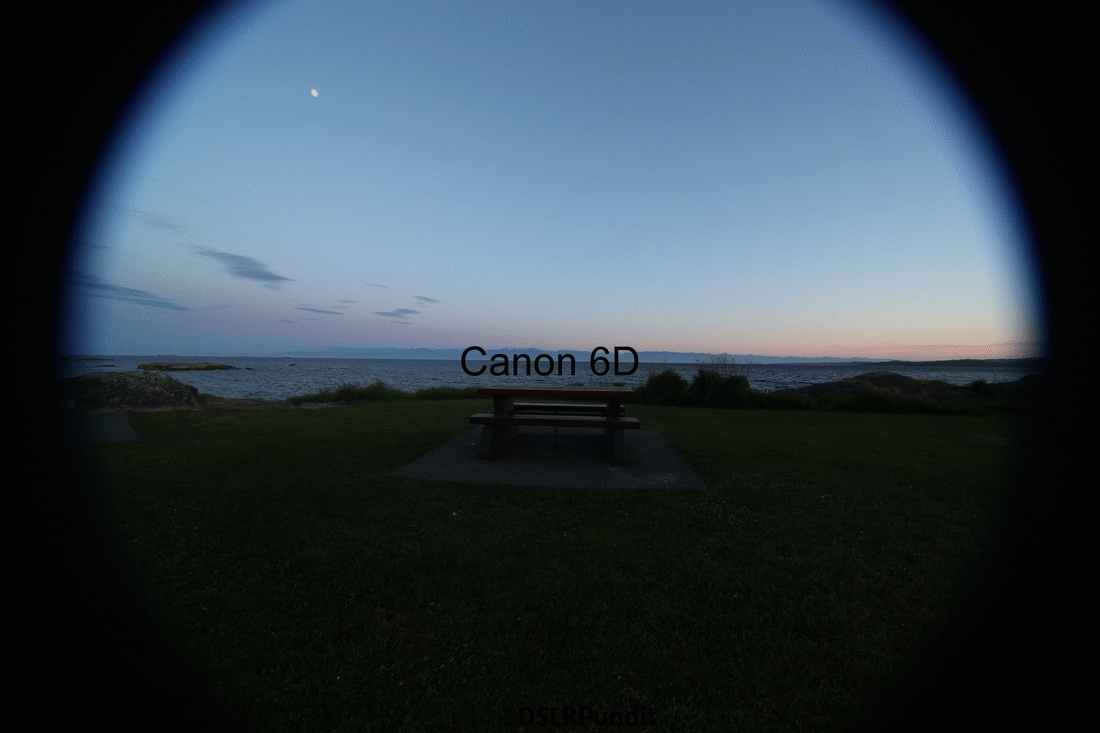
For the correct alignment of the exposure, it is important to consider the matrix. Keep in mind that the size of the matrix (crop or full size) will affect the focal length. That is, different distances will behave differently on various types of matrices. For example, 50mm will look longer on the crop matrix.
5. Crop Factor
It is a conventional index that shows how many times the field of view on a lens with a certain focal length, set to a given sensor format, is reduced compared to the field of view of the same lens on a full frame.
6. Aperture

This characteristic determines how much light enters the lens of a camera. Usually, the concept of "aperture ratio “is used as a simple version of the term “diaphragm number." An optimal aperture for the best portrait lens is f/2.8-f/5.6.
7. Depth of Field

This concept has a strict scientific definition, but we will give a simplified one – it is the range of distances from the lens in which objects look sharp. Actually, if you look at most shots, for instance, pictures of people, taken with professional cameras, you will see that the person's face looks sharp. That is, it is placed in this very depth of field, and those objects that serve as the background are blurred, or rather, located outside of it.
8. Add-ons

No matter how ideal and expensive your best lens for portraits is, you will always want to buy something extra for it. Most often, it is a lens hood or cleaning kit, but do not forget about filters. They will be useful not only in landscape photography.
1. Vivitar Circular Polarizer Glass Filter
This filter allows cutting off excessive polarized light, increasing the color saturation of the scene, and suppressing unwanted reflections. Its effect cannot be reproduced in digital image post-processing.
2. Neutral Density Filter
Neutral Density (ND) filters reduce the amount of light reaching the camera, allowing you to produce a longer shutter speed than is otherwise possible.
3. Color Lens Filter
This set of color filters will completely transform the shot taken in any light or in the window.
